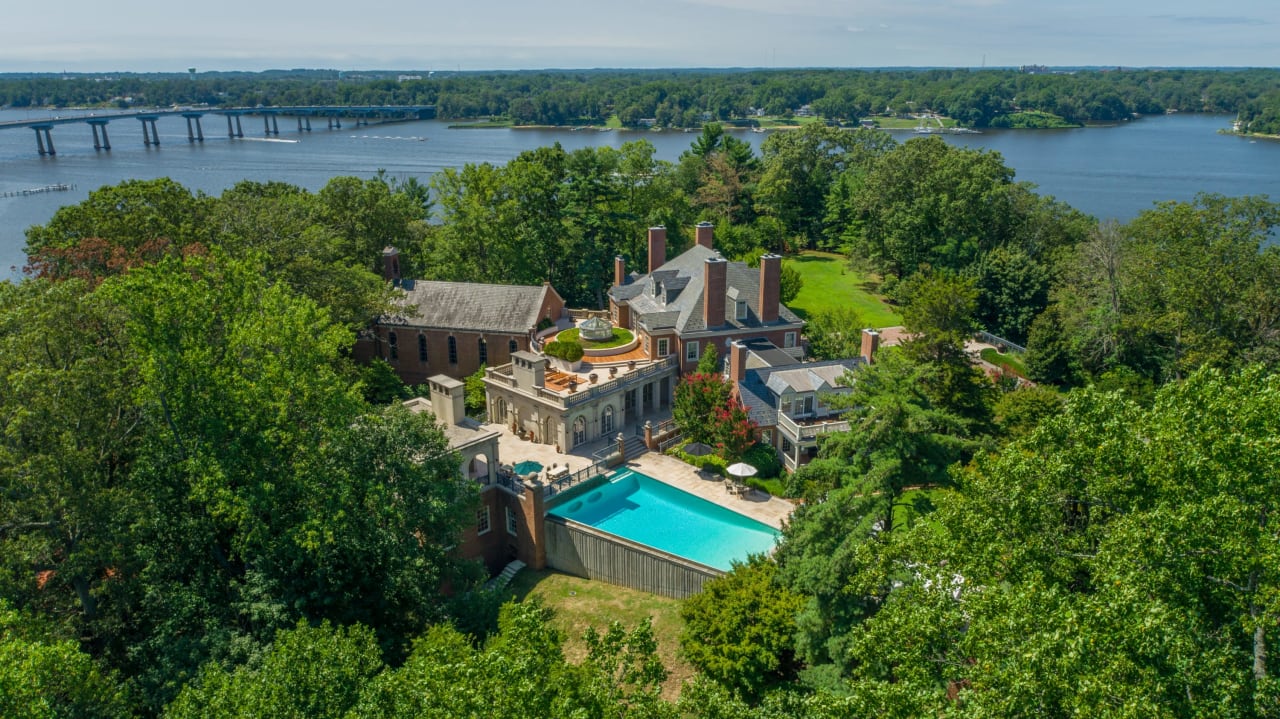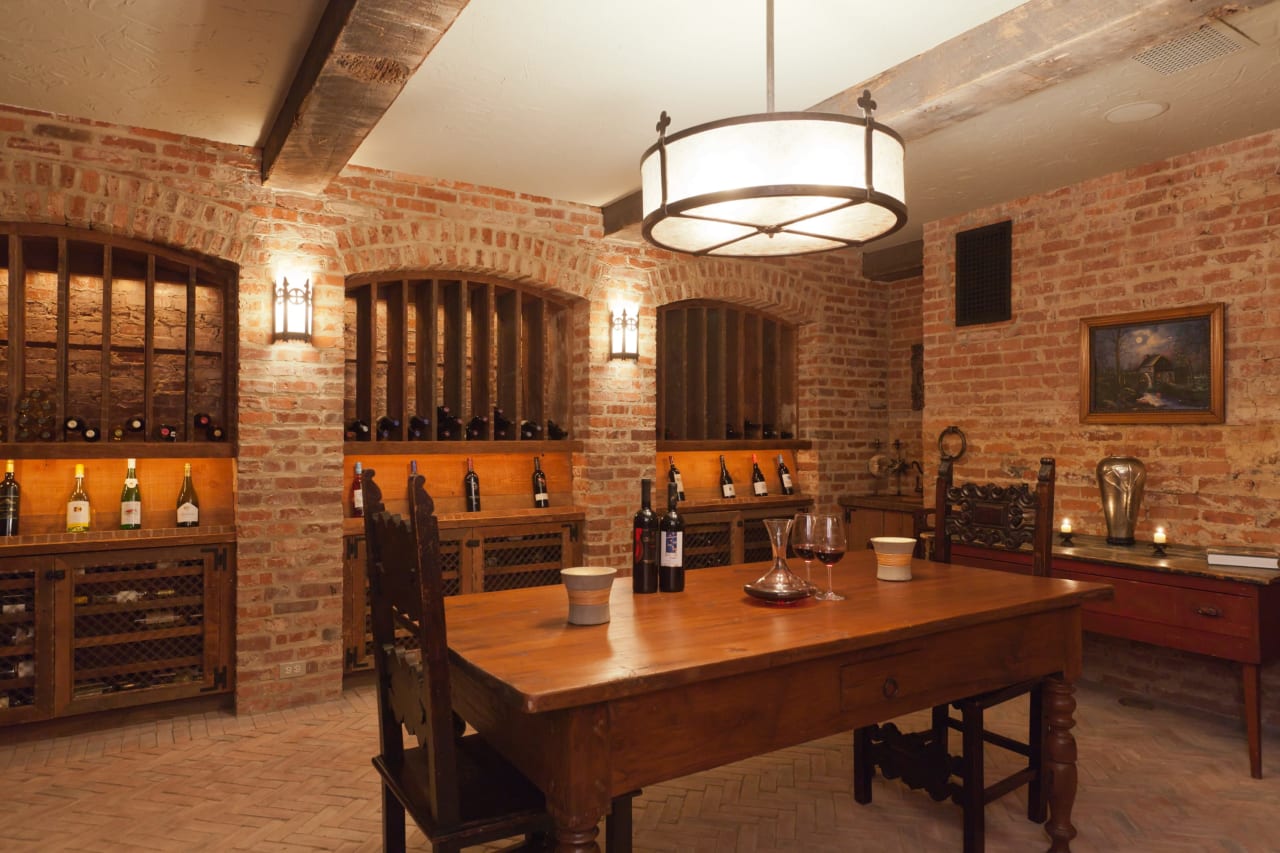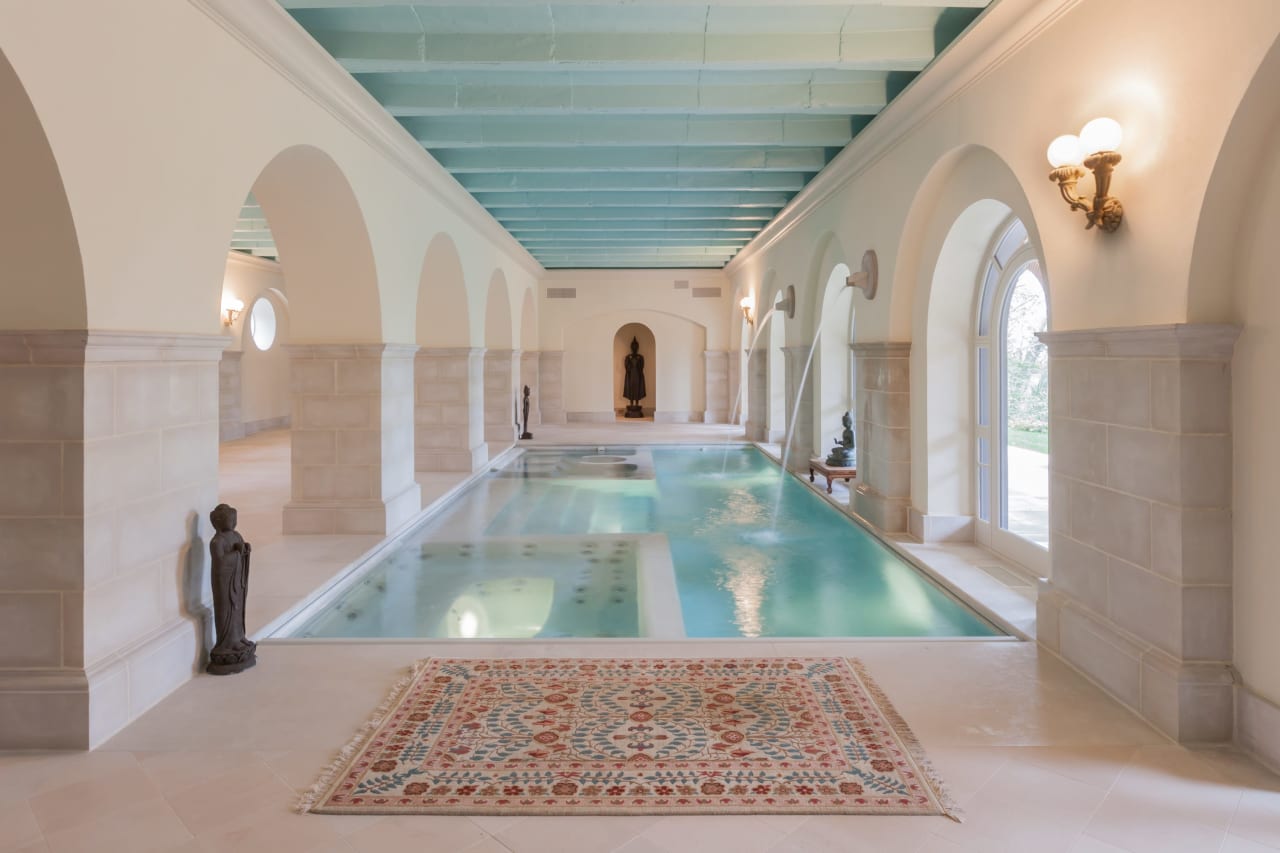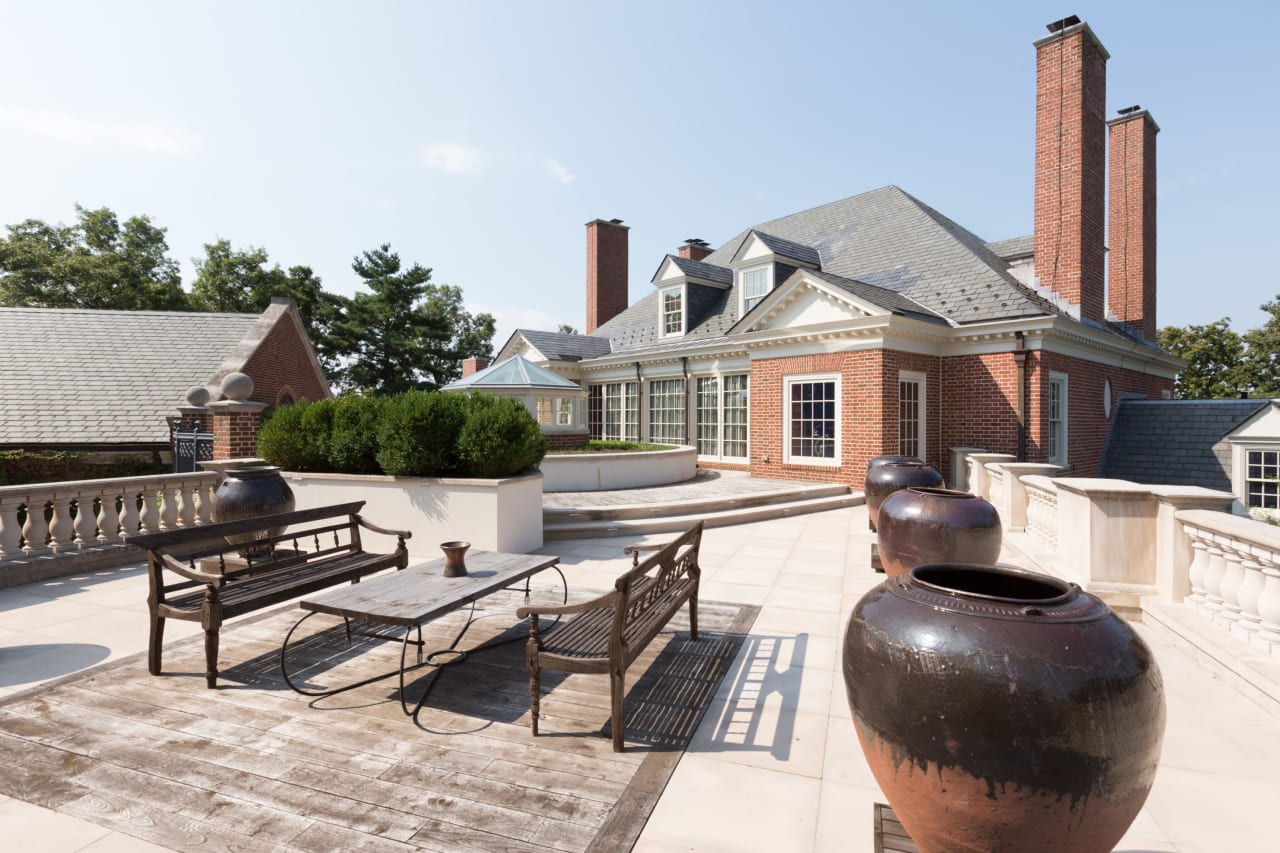


Set on 23 private acres overlooking a gracious bend of the Severn River, just minutes from downtown Annapolis and less than an hour from the nation’s capital, lies one of the most distinctive estates offered for sale on the East Coast.
Offering stunning architectural beauty, this unusual home, modeled after the James River Plantations, is the result of a mammoth and complex renovation that brought it back to its classic Georgian style yet with an acknowledgment of the owners’ contemporary tastes and interests.
Formerly a Capuchin monastery, this stately brick structure offers modern amenities for comfortable family living yet easily accommodates elegant grand scale entertainment and private events. The attention to detail and emphasis on proportions and craftsmanship are unparalleled.
Featuring spectacular 270 degree river views, the extraordinary estate contains a total of seven bedrooms, eight bathrooms and eleven fireplaces, formal dining room and formal parlor, commercial size gourmet kitchen, oversized ballroom, conservatory, family room, library, music room, indoor spa, game room, wine cellar, catering kitchen, work shop, a secret vault, nine car garage, roof garden, pool pavilion, 60 feet infinity edge pool, tennis court and direct access by funicular to a 6 slip private dock with boat lift. Additional structures on the property accommodate a three bedroom, two bath-guest/staff house, an Asian tea house and mechanical facilities.
Built in 1922 (by an arms dealer who purportedly concealed illegal weapons in a hidden basement passageway still accessible today), the property changed hands several times before being purchased by the Catholic Church and converted to the St. Conrad Friary, which at its peak housed more than 60 Capuchin monks. Thirty years later, the monks’ numbers had dwindled and the house—then complete with a medieval-style chapel and a boxy five-story dormitory—was sold. Over the next thirty years it remained largely empty, a dilapidated structure that caused prospective buyers to run the other way.
The current owners, however, were not intimidated. They were seeking a spacious and private property on the Severn but originally passed on the property because the Friary was listed as having 27 bedrooms, far greater than their needs.
Watch this carefully curated tour of the full estate to enjoy the full extent of the property.
Discover the history of the Friary at the Severn and watch how it has evolved.
The family tasked Annapolis architect Charles Anthony with restoring the mansion to its original splendor and adding the touches and conveniences that would make the place feel like home. “Though respectful, they weren’t interested in a strictly historic approach,” Anthony said. “They wanted a functional, comfortable home for living and entertaining.”
In fact, the owners had a specific vision for a home that would incorporate their preferences—particularly a love of all things Southeast Asian and Indian, amassed during many years of travel to those regions. Anthony stated, “The challenge was to pull [the Asian influences] together while being true to the Georgian vocabulary.”
When the restoration began, the house was divided into three sections: the central core, now faithfully restored in the Georgian Revival style, and the two wings, angled off the rear of the house, which were added during the monks’ tenure. The owners thought about tearing down the chapel but decided ultimately to keep it as a giant entertainment hall. They took out the confessionals and the organ and replaced the dais with a massive limestone fireplace that accents the medieval sensibility of the room. They removed beat-up parquet floors in favor of smooth, lush teak.
Retaining the institutional dormitory wing was a non-starter. In its place, Anthony designed a one-story guest wing with two bedrooms and a spacious common room filled with Asian artifacts. Eye-catching as these antiques are, the room’s ‘wow factor’ definitely comes from two windows that, like giant portholes, offer underwater views into the adjacent outdoor pool’s interior, aquarium-style—while bathing the room in a bluish glow.
All three sections of the house were linked by what Anthony described as “a tiny knuckle—only one doorway to get to all three wings.” In order to create a better connection between the spaces, Anthony designed an expanded, two-story circular hub clad in limestone, encompassing a conservatory upstairs and an atrium below. The conservatory leads to the former chapel and the guest wing, as well as to the infinity pool and adjoining terraces; the rotunda provides access to an indoor resistance pool, sauna and whirlpool. An oculus in the center of the conservatory admits light while recalling the home’s Georgian Revival roots.
Anthony also had to contend with a steeply graded property when making his plans. “Maryland Critical Law is strict with steep slopes and proximity to water,” he said. “We had both.” With the help of landscape architect Jay Graham, the property was restructured in a range of grades, both inside and out (a common room, for instance, is built below the level of the adjacent pool—which in turn drops off on one side 14 feet to the natural grade of the property). Taking advantage of the sloping land, Anthony created functional underground spaces, such as a giant garage concealed beneath a walled terrace to the side of the house.
The owners called on designer Henry Berman of Johnson | Berman for guidance with the interiors. The central, Georgian-style structure remains traditional with classic Western furnishings and original heart pine floors. Upstairs, a spacious master suite features his and hers dressing rooms and gorgeous views of the Severn from a private, landscaped roof terrace. However, adherence to the Georgian sensibility loosens as one moves farther from the center of the home; for example, heart pine floors give way to limestone from a quarry in India, with paneling in imported teak. Yet Berman ensured that the interiors blend seamlessly together.



